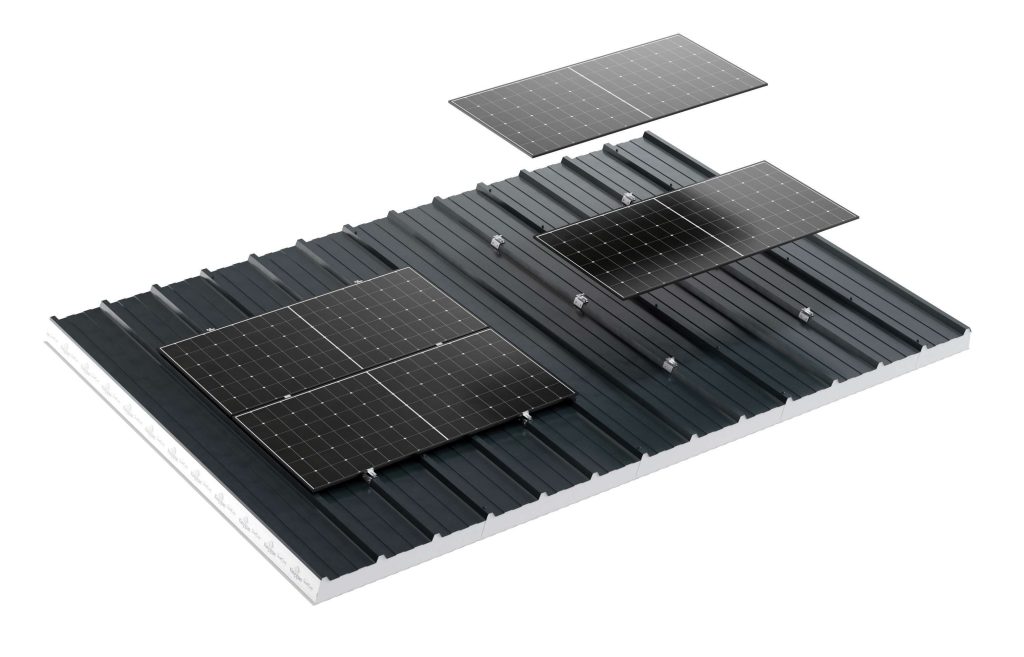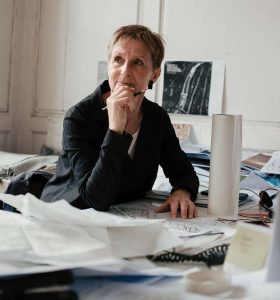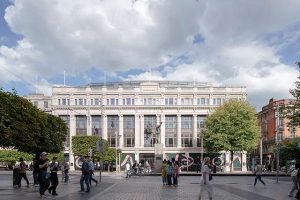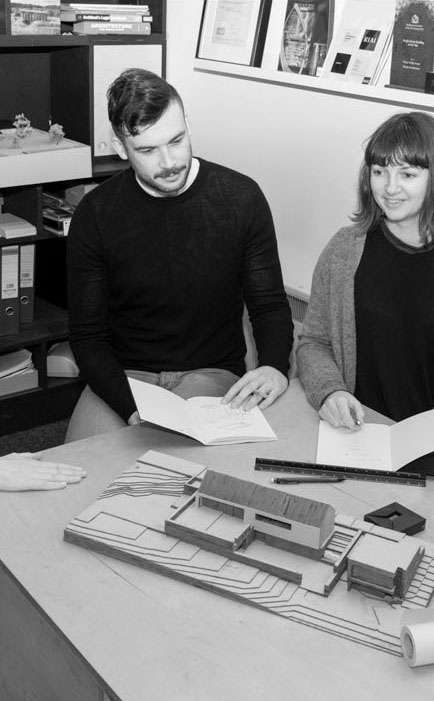
In Practice… SIMPLY ARCHITECTURE
PLAN CAUGHT UP WITH GARETH SULLIVAN AT SIMPLY ARCHITECTURE TO TALK ABOUT THE IMPORTANCE OF HAVING EMPATHY FOR CLIENTS AND WHY PRESERVING INTEGRITY IS OFTEN MORE IMPORTANT THAN A BULGING PROJECT PORTFOLIO
Where did your interest in architecture come from?
When I was at school, I spent a lot of time on building sites during the summer holidays and on Saturdays. I knew my future lay in that area. I was interested in architecture but didn’t really want to invest seven years in the course so for that reason, architectural technology appealed to me. At that stage I was more technically minded and more interested in details and construction rather than the more artistic side of architecture. So I did the architectural technology course in Jordanstown in Belfast. Halfway through that course I had the opportunity to work in an architect’s practice and it was then that I knew I wanted to be an architect. After finishing the technology degree I was able to transfer to the Hull School of Architecture in the UK and instead of going into first year in architecture, I went into third year. It was a great way of going about it. I have a very strong technical foundation which I’m very grateful for. I wouldn’t necessarily have been great at doing sketches, I was much more into model-making and figuring out the construction details. I think for me, the creative side of designing came after getting to grips with the technical side but the whole thing eventually became an organic process. We work on a lot of residential projects and I think it helps to have a good understanding of the nuts and bolts of how a project all goes together.
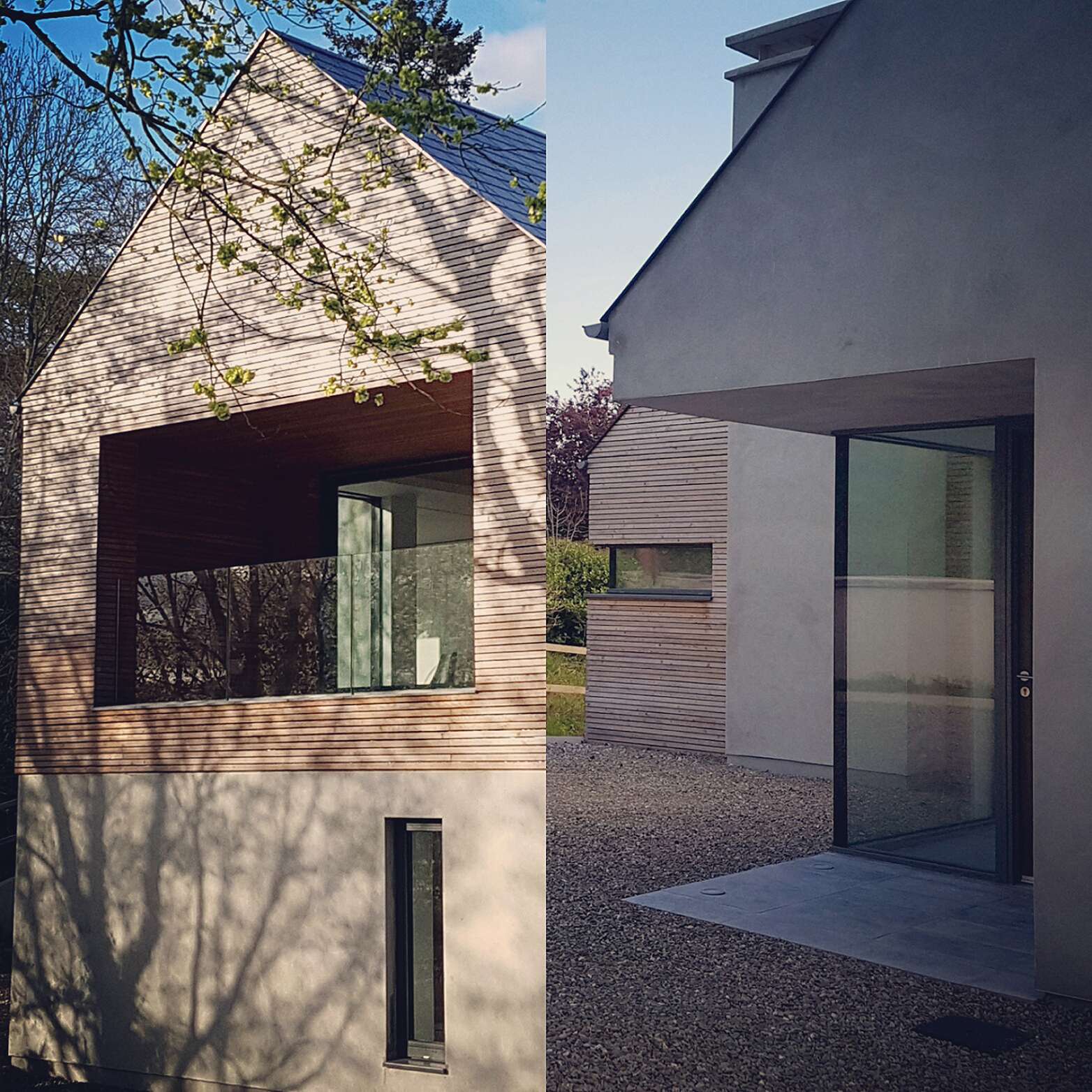
When did you set up the practice?
I set up in 2009 after moving to Cork. I had been working in London and my then-girlfriend (now wife) was working in Cork so I made the decision to move back to Ireland and secured a job in a practice just outside Cork city. There was probably a bit of uncertainty in the market but it was before the recession really kicked off. I was due to start the new role in January 2009 but it was at that stage when the crash really exploded. Architectural practices started closing down and the job fell through. That’s when I decided to set up on my own.
Starting a practice in such a severe economic downturn must have been daunting
It was, I could have returned to London but I decided to stay in Cork and try and make it work. I began hot desking and started to build up a client base very slowly. It took a long time to create a sustainable, workable business and it was definitely a precarious time to be working as an architect. There were very few projects. On the flipside, I had a lot of time to work on projects so I could dedicate time to model-making and detailed drawings. I only had a handful of clients at any one time so they got a lot of attention. That actually formed the foundations of the practice.
When did you start to take on staff?
In 2014 we began recruiting for architects. Today there are two other architects in the practice; Ailbhe who has just completed her Part 3 and Paul who is Part 2. My wife is an accountant and she also works part-time in the practice. It’s helpful to have someone in the office who isn’t an architect and can offer a different perspective. Back in 2014, it was difficult to find good people in Cork. Graduates had either left the country or they were up in Dublin. It’s been much easier to find talented staff over the past couple of years, I’ve been very lucky. There’s a real collaborative approach here, there’s no real hierarchy.
We’re very meticulous and thorough in what we do. There’s meaning in it for us. We’d rather not take on a project than take it on half-heartedly. From a business point of view, that may not be the best decision but there’s integrity in the practice and that’s important to us. For the most part, a client will only embark on a project once in their lives so we just want to give it a really good shot and do our best. I recently built my own house so I was the client and the architect. It was great in that the process gave me a great insight into the problems that clients face. People are brave when they trust their architect with their hard-earned money. Good on them for trying something new, they’re the ones that deserve the credit.
What projects are you working on at the moment?
We have several projects ongoing right now. We’re doing a spa project in West Cork at the moment, a hotel and plenty of residential work. We didn’t set out to attract hotel work, it was something that happened organically. When I was doing my year out in Dublin in my first course, I worked with an architect who specialised in bars and hotels. My uncle also runs a bar furniture factory in Monaghan so I have a good knowledge of the hospitality industry. It’s great not to be pigeon-holed as a practice that just does residential. We’ve also completed office buildings, restaurants and cafes. We’re not averse to taking on that type of work, it’s important to me that we’re as diverse as possible. The one-off residential market isn’t sustainable so it’s good to have experience in other sectors. Like many small practices, we find it difficult to break into public sector work due to the nature of the public procurement system. It’s a real issue that faces small emerging practices which ensures not everyone gets a fair crack at new public work.
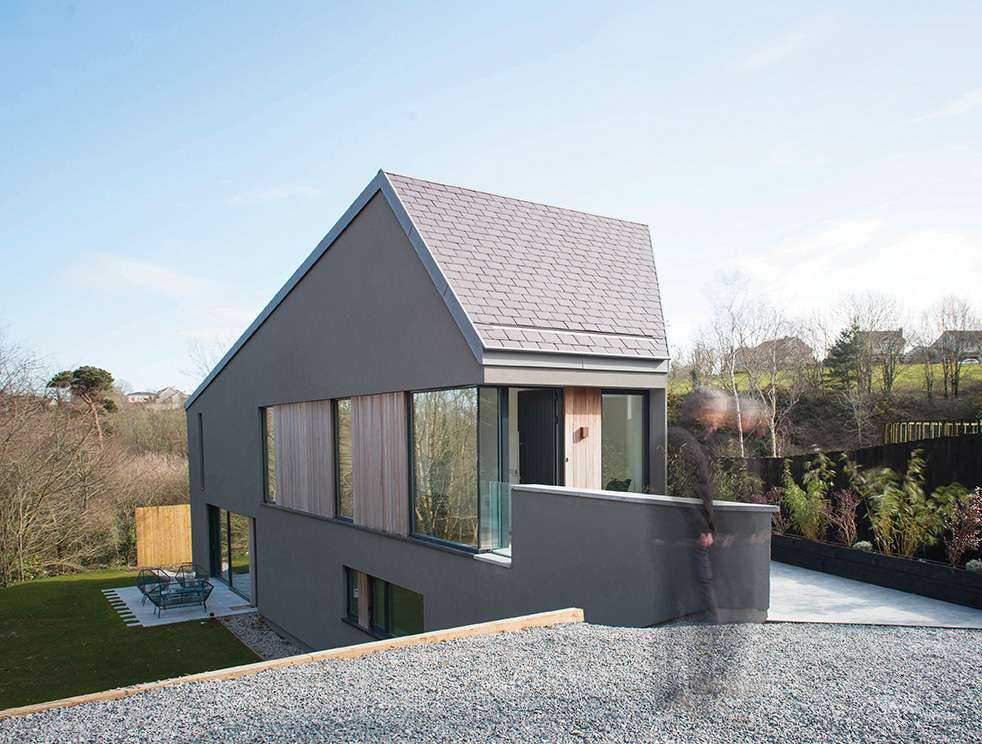
Is there a particular project that helped get the practice noticed?
In 2011, we designed a house for one of my first residential clients, taking it from inception right through to completion. It didn’t get built until 2016. Around that time, we were finding that a lot of clients were having difficulties securing finance from banks so it was taking a long time to get projects off the ground. We entered ‘Split House’ into the 2017 RIAI awards and it was highly commended in the ‘Best House in Munster’ category. That was definitely our breakthrough project.
How important was that recognition?
Hugely important. We also won the RIAI Future Award in 2019. The publicity definitely helps. I remember entering a competition with The Design & Crafts Council Ireland in my second year of practice. It was a national competition to design a pavilion for the Electric Picnic and we ended up coming second to renowned international practice Bucholz McEvoy. It was a really enjoyable, exploratory project. That was an eye opener for me. When you’re a small practice and you’re working on your own, you have the head down most of the time and you just don’t see yourself in that league. A few positive experiences gives you a boost and the confidence you need to keep going.
What’s the climate like for design in Ireland today?
Historically, I think Ireland has had a bad relationship with design. if you compare our education system with the likes of Scandinavia or elsewhere in Europe, design is valued and incorporated into the syllabus. We haven’t really had that here but I think in recent times, people have wised up a bit. The quality of design in our homes has gone through the roof and that’s down to the excellent work being carried out by small practices around the country. People are being a lot more inventive with extensions and renovations. On the commercial side, I think that hotels and restaurants have always invested in high quality design but now, there’s more of an authentic streak coming through the brief and as designers, we have a responsibility to get that across in the design. It’s a really creative industry, you can have so much fun with it. We also do a lot of work with local schools and have run design workshops with students to help them get a better understanding of architecture. We did this through the Irish Architecture Foundation’s ‘Architect in Schools’ Programme and also with the Art Teacher’s Association of Ireland (ATAI) in association with The Glucksman Gallery in Cork and The National Gallery of Ireland in Dublin.
What’s your experience with BCAR?
We deal with BCAR all the time. Our projects are mixed in that some require it and for others, it’s optional and clients have opted out. For me, it’s a double edged sword. I think the premise of it is good but I don’t think it has been implemented very well. I’ve worked in the UK and I think the building control system over there is better. There’s a flat fee to the local council and the local authority have building control representatives that visit the site. It’s a more controlled process and while it does have its own issues, it is a better system in my opinion. With BCAR over here, there’s a huge amount of paperwork involved for the likes of ourselves. Also, a lot of builders aren’t as prepared as they should be so that creates a huge amount of extra work for us to try and compensate for their lack of organisation. If the thousands of euro paid to the assigned certifiers was instead given to local authorities, it might allow them to employ more building control inspectors. It would make for a better system. As it stands, it puts an onus on small practices to do a huge amount of extra work.
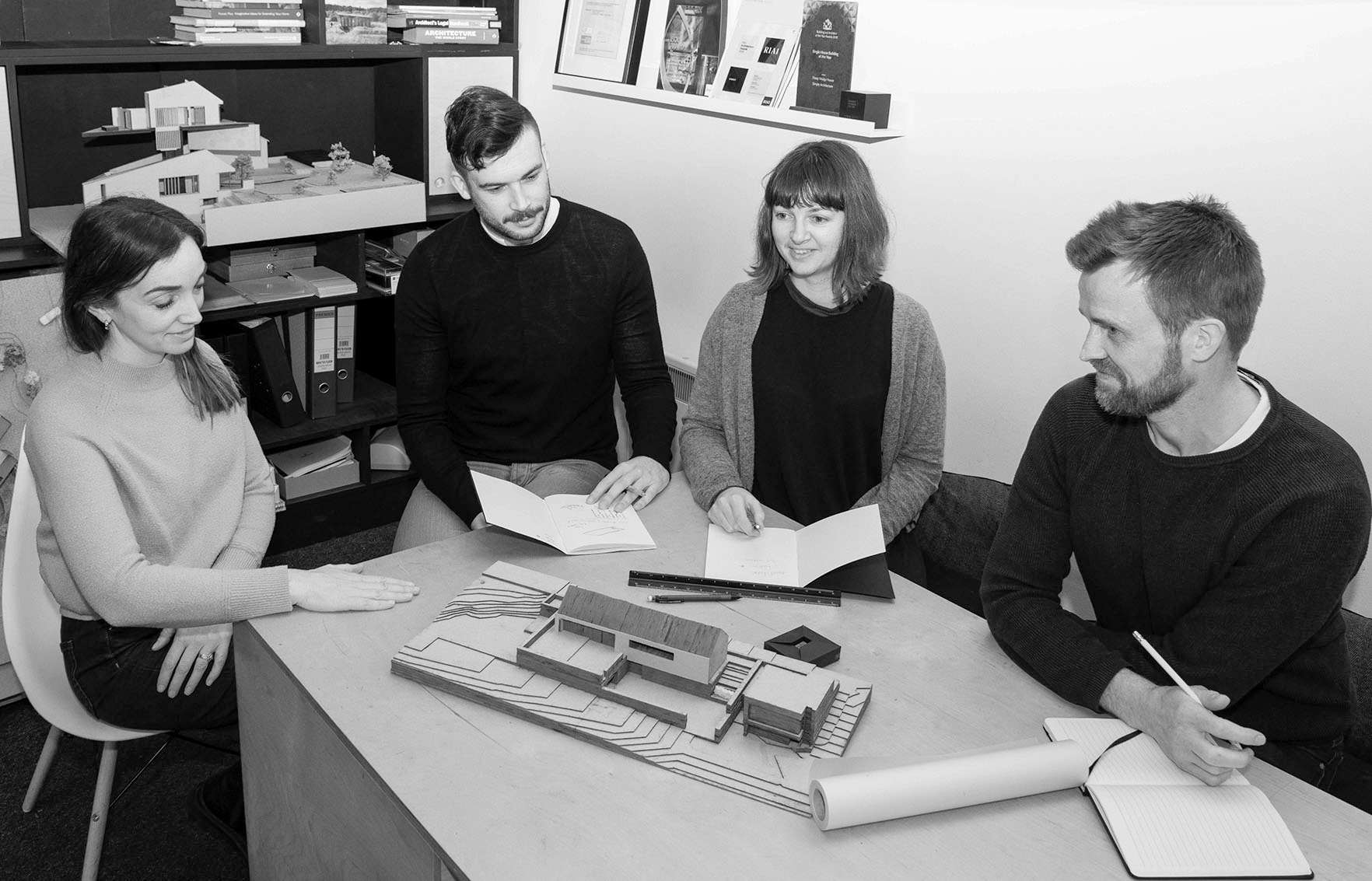
What would you like to improve about the practice?
The level of efficiency, but I think that comes back to the nature of the job. Architecture isn’t the most efficient business model. Having to redesign a project maybe several times is just part of it but there’s no doubt that it creates inefficiencies. When it comes to private clients, there’s yet another layer of inefficiency. It’s important to recognise when a project isn’t going to develop and respond with a more flexible design proposal, knowing it will change. As much as we can, we try and reduce inefficiencies by using automated process where possible, particularly in model making and administration. Design however is a very fluid process, so it is about trying to allow as much time as possible for that process to evolve and to enjoy it. Being selective about projects and being able to identify the ones you’re really going to buy into is also important. I remember a quote from Bjarke Ingels where he said something like, “If you’re going to put seven years of your life into something, you’d want to like it.” There’s a lot of truth in that. For us, it’s important that we have fewer but better projects that we’re completely engaged with.
What do you like about the day to day running of a practice?
I love the people side of it and meeting clients and tradespeople. It’s a varied profession and you need to have a lot of different skills to do it well. A lot of the time you’re dealing with intricate little issues or acting as a mediator between the client and builder. I love the design side of it as well but it’s the entire process that I enjoy. It can also be tedious; there’s no point denying that the site meetings and the costing process can be laborious but it’s the incentive of getting a project built that keeps you going.
You set up the practice in a recession. Are you prepared for the next one?
We’re very lucky in that we’re a small, stable practice. We have a rented shopfront office in the city which we don’t necessarily need but it’s a small space and we haven’t over extended ourselves. I’m very aware of that. We’re ambitious but I’m not going to wake up in the morning, hire 15 new members of staff and rent a huge space. I think the last recession somewhat curtailed ambitions and that’s definitely something that has shaped me. Right now, we’re expanding slowly and steadily and we’re happy with that pace.
____________________________________________________________________________
Denise Maguire Editor of Irish Construction Industry Magazine & Plan Magazine


